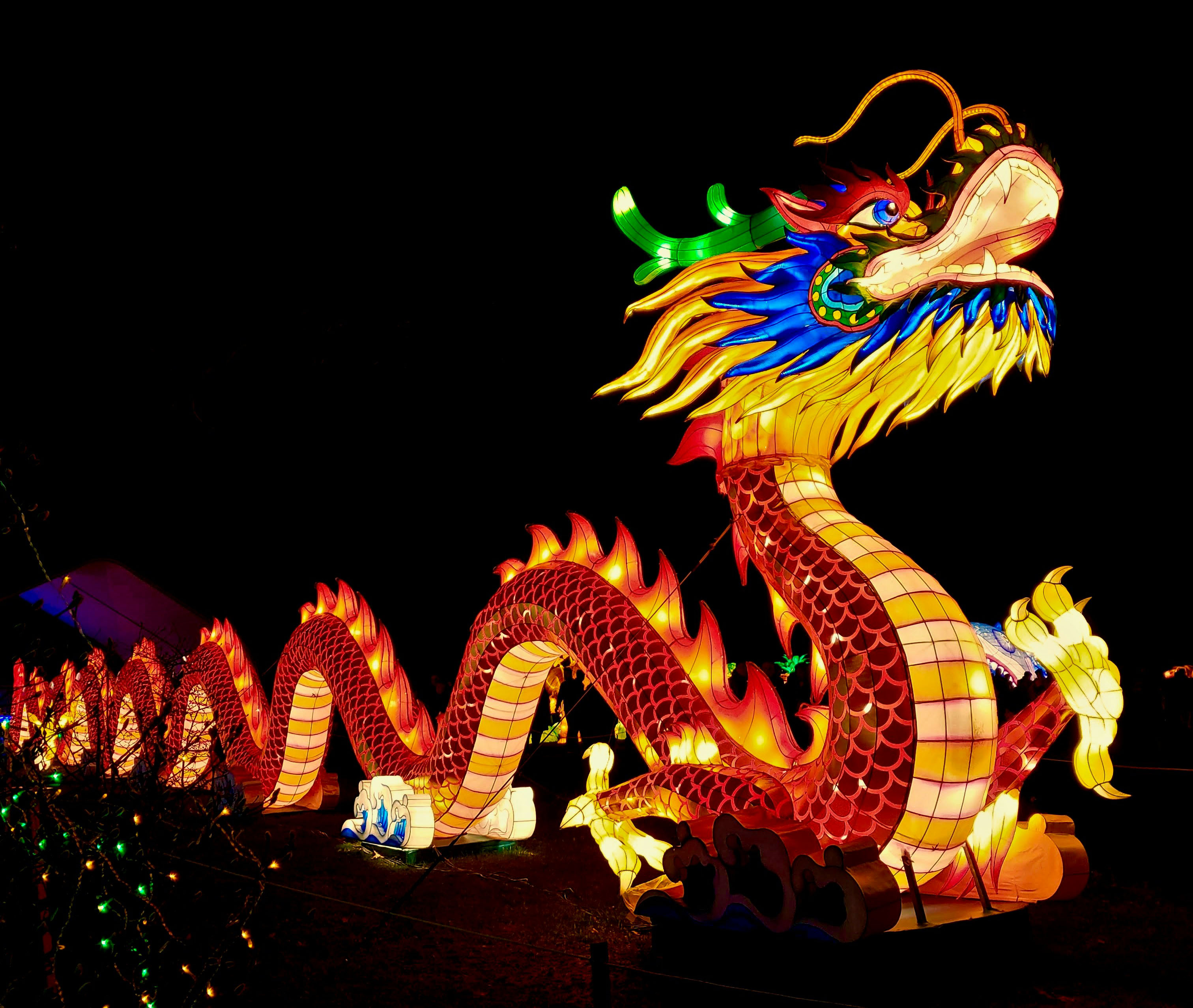
2024 in the Year of the Dragon in many cultures. Photo by RM on Unsplash.
Opening Ceremony
In a go-round, invite students to share in turn their responses to this prompt:
- What is a holiday or occasion you celebrate that affirms your identity? Share a custom and/or tradition from it that most resonates with you and why.
About the Lunar New Year
Share with students this information:
- In January or February each year, billions of people across Asia and Asian diaspora communities around the world celebrate the Lunar New Year, the first day of the year in the lunar calendar. A diaspora is a spreading of people to geographically different regions than where they originated.
- While the first day of the Gregorian calendar (January 1) is calculated based on Earth’s cycle around the sun, the first day of the lunar calendar is calculated using the moon’s phases. This type of calendar system was used thousands of years ago all across the globe.
Ask students to write down any associations they have when they think of Lunar New Year.
Invite several students to share, reminding them that there are no wrong answers.
Next, have them consider this list of countries that celebrates Lunar New Year: Brunei, Cambodia, China, Indonesia, Laos, Malaysia, Mongolia, North Korea, Singapore, South Korea, Thailand, Vietnam
Note for students that this is only a partial list of all the countries where people celebrate the Lunar New Year.
Share the following:
- In Asia, the lunar calendar and traditions of ancient China strongly influenced the traditions of other neighboring parts of the continent. Today, many, but not all, countries in Asia continue to use it in parallel with the Gregorian calendar. In some countries, the Lunar New Year is still considered the most important day of the year.
- There may be shared traditions that stem from the ancient Chinese, but over the course of history, each culture has evolved its own unique set of traditions in celebration of this special occasion.
Invite students to share their reactions to the list of countries celebrating the Lunar New Year. Are there any countries they are surprised to see on this list? Are there countries you think should be on the list that aren’t? (See the extension activity, which invites students to find out about Lunar New Year customs in those countries.)
Discussion
Ask students to reflect back on the associations they wrote down about Lunar New Year.
In a go-round, invite students to discuss:
- Do you think these associations would be representative of all the countries on the list? Why or why not?
People from various countries/cultures observe a wide range of traditions and customs during Lunar New Year. There are many similarities in how Lunar New Year is observed, and at the same time, we can explore the rich differences that each culture offers.
Being Inclusive about the Lunar New Year
Share with students:
- What name people give to the Lunar New Year depends on their particular language, nation, or culture. It might be called Chinese New Year, Tết (Vietnamese term), or Seollal (Korean), for example.
- It has become more and more common for people to use the term “Lunar New Year” because it is more inclusive. That is, the term includes people who may otherwise be excluded or marginalized by the use of a narrower term.
How well are we doing when it comes to being inclusive? We’re going to consider this more deeply by reading and discussing the article below.
First, share this background with students:
Zodiac animals are a common symbol of the Lunar New Year, with each new year corresponding to an animal. In China, there are 12 distinct zodiac animals. It is believed that the characteristics of those animals will predict what the new year will be like.
But what if the zodiac animals are not the same for each culture? Let’s consider an interesting example of when cultural differences highlighted the need for greater inclusivity. For the Chinese, the year 2023 was considered the Year of the Rabbit. But according to the Vietnamese zodiac, this was the Year of the Cat.
Give the group a few minutes to read the following article. https://www.cbc.ca/news/canada/british-columbia/vietnamese-canadians-year-of-the-cat-zodiac-1.6720328
Discussion
In a go-round, ask students to share:
- What is one thing that resonates with you from this article?
Elicit or explain that this article explores how members of the Vietnamese community in Canada felt excluded by the way Lunar New Year was discussed and depicted in images in 2023.
Why is this important? Despite the use of the more inclusive term, “Lunar New Year,” we see that promoting inclusion goes beyond the naming of a holiday. What more can we do to address the marginalization of groups of people?
Ask students to share in a go-round:
- What is something we or others could do to promote more inclusion around Lunar New Year?
Closing Ceremony
Ask students to share one word that they hope will describe this new Lunar Year. What do they hope this new year will be like?
Extension Activity
Invite students to research these questions to share with the class at a later time:
- What other differences can you find between how various cultures celebrate the Lunar New Year (examples: zodiac differences, traditional holiday foods)?
- Are there countries in Asia that do not celebrate the Lunar New Year? What are they?